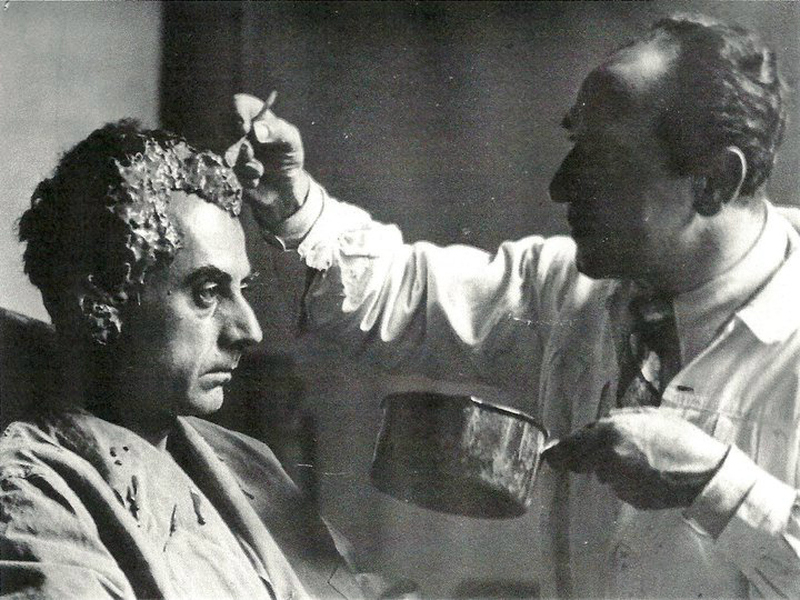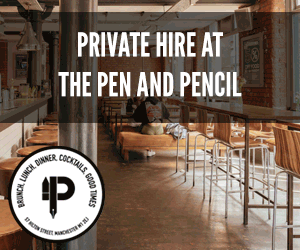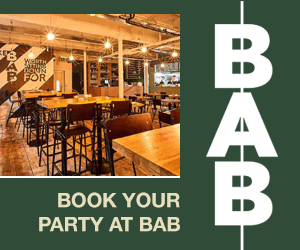As VE Day approaches, we look back on a compelling wartime tale
This article was originally published in 2018 but has been updated
Built in 1891, while Manchester’s cotton trade was still booming, Warth Mills once boasted 46,000 spindles and 600 looms. But World War I, and Japan’s subsequent development of 24-hour cotton production, saw Britain’s textile trade slump: Warth Mill was one of 800 mills to close between the wars, remaining in disuse until 1940.
Then, it reopened as something entirely different…
For decades, the story of Warth Mills remained something of a secret
World War II. As Northern Europe fell under Nazi control, Churchill instructed authorities to intern (imprison) all Italians, Germans and Austrians resident in Britain. These ‘enemy aliens’ included Italian chefs and café owners (some of whom had lived here for decades) and German Jews who had fled Nazi death camps, including many prominent artists and academics. While most of them posed no threat - and some even went on to fight with the allied forces - British wartime security meant those from opposition countries weren’t to be trusted.

So began Warth Mills’ use as an internment camp, receiving thousands of ‘aliens’ from June 1940: many destined for deportation to Canada, Australia and the Isle of Man.
But the following month saw the sinking of the SS Arandora Star, after being bombed by Germans. The ship was carrying hundreds of internees bound for Canada, many of whom couldn’t be identified - prompting concerns in parliament about their treatment, and a subsequent decline in general internment. By 1941, Warth Mills had become an official POW (prisoner of war) camp, with the Geneva Conventions Act 1929 affording inmates certain standards; including better living conditions.
For the internees who came before them, however, there were no such measures. Tellingly, in preparation for its use as a POW camp, the whole place had to be cleaned. According to internee Joe Pieri, “It was like something out of Dickens: broken glass, dust in the air from the old mills that had been there and broken machinery.” Sanitary conditions were inadequate, lavatories were hastily dug latrines and food was sparse - with no proper rationing system to ensure every man got his fair share. Not only that, it was dangerous: unstable beams sometimes proved to be fatal.

For decades, the story of Warth Mills remained something of a secret. But that changed in 2018 thanks to a project that shone a light on its little-known internment history, following a successful £64,500 Heritage Lottery bid. Led by Unity House, based at The Met in Bury, The Warth Mills Project began in 2017 when volunteer researchers started creating a digital archive, and included a comprehensive website and commemorative season of summer events.
Of the project, Richard Shaw from Unity House said: “The internment of Italians and German Jewish refugees has never really been explored and few people know about the full history of Warth Mills. We are delighted to finally honour the internees by telling the stories of the hundreds of men who never made it home to their families.”
As part of the project, researchers also spoke to refugee Henry Wuga MBE, the last known survivor of Warth Mills and then an impressive 94 years old. Wuga escaped Nazi Germany at 15 but was arrested and falsely accused of espionage.
Wuga’s full story can be found below, one of several tales that have been recovered for The Warth Mills Project. Finally, this terrible injustice - once covertly suppressed - is receiving the attention it deserves.
Henry Wuga's story
I was born into a Jewish German family in 1924 and our family business was in the catering industry. When I was 14, in 1938, my mother took me out of school as she thought it was wise that I learned a trade. I went to Baden Baden in the Black Forest and worked as an apprentice commis chef for six months at a strictly kosher business, before returning home in November 1938.
When war broke out in early 1939, my parents were understandably concerned for my safety and found me a place on Kindertransport for evacuation. Kindertransport was a rescue effort organised by The Central British Fund for German Jewry (now World Jewish Relief), which it had set up after going to our government and asking if there was any way that Jewish children could be saved from Nazi persecution through evacuation. The Home Secretary of the time, Samuel Hoare, was from a liberal Quaker background and agreed; saying if the necessary funds could be raised quickly, it could be pushed forward. The plan was passed in government within three weeks, a lot quicker than things go through nowadays.
I got my place on Kindertransport at the age of 15. This involved travelling on a train from Nuremburg and there were around 100 children being evacuated. I didn’t have any siblings so I went on my own and didn’t know anyone but, having worked away for six months at 14, I felt like I could handle it. However, some of the other children on board were only six or seven years old at the time and had never been away from parents before so it was an awful journey – full of crying children who were being taken away to safety, but also away from their parents. They didn’t understand what was happening. I can remember when we reached Holland, there were ladies there to meet us with hot chocolate.
We passed through Holland and got on a boat to Essex before reaching Liverpool Street Station in London by train. Some children were collected by people who had acted as guarantors for us and I remember it being like a cattle market, with siblings separated. The children without a guarantor were taken to a holiday camp.
I travelled from Euston to Glasgow Central with two boys and one girl on the Royal Scot. This was a train with waiter service and I’d never seen anything like it! On arrival at Glasgow, I was collected by my guarantor, a nice Jewish lady called Etta Hurwich who was in her late sixties to early seventies. She was Latvian and had agreed to take me in. I had a comfortable home there, Etta was extremely kind to me and I was sent to school locally. I wrote to my parents, but I had to send my letters home via my uncle in Brussels.
In 1940, the police unexpectedly came to our house in Glasgow and I was arrested and taken into custody, being sent to the High Court in Edinburgh and charged with the crime of corresponding with the enemy - which was a very serious offence. This was because of the letters I had sent to my parents via my uncle. I was charged and declared a ‘Dangerous Enemy Alien: Category A,’ taken back home and given one hour to pack and one phone call. This all happened very quickly. I was only 16 years old, which was under the age of internment.
Nevertheless, I was sent straight to an internment camp, Mary Hill Barracks in Glasgow, which was a large military establishment. I was held as a prisoner with 25 German seamen and, as a 16-year-old Jewish boy, it wasn’t a pleasant experience. I was called a ‘dirty Jew’ among other things.
I was then taken to another internment camp, Donaldson School in Edinburgh. While I was there, those in charge asked if there was anyone who could cook. Because I had spent time as an apprentice chef, I found myself suddenly in charge of the kitchen - with 25 German sailors as my staff, can you imagine!
I was moved to another internment camp at York Racecourse. I can recall one of the Sergeants coming into the kitchen to get his own provisions for the train and I had to tell him there was nothing left. I spent a week at York before being taken to Warth Mills in Bury near Manchester.
While all the other internment camps were rough, internees were treated reasonably, but Warth Mills was a completely different story. It was awful and remember I was still only 16 years old. I was strip searched and had any valuables taken away. I was given a hessian bag and sent to a place where hundreds of men were already - it was a crazy, horrible place. Extremely dangerous and primitive, there was overhead steel hanging down and little food. We all slept on straw. I can remember we had to cross an open yard to get around and, on one occasion, a guard ordered everyone to stop or he’d shoot us - and one man begged to be shot. That was an indication of what it was like.
One thing I remember about Warth was, while there was little food, there was bizarrely a good supply of carnation milk. I’ve never been able to touch it since.
I can also remember one day, one of the overhead transmission beams fell down and killed someone - I think he was a Catholic priest. There was one water tap for 60 men and it was extremely dangerous…there were casualties in Warth Mills, obviously.
I was at Warth for seven to ten days and then moved to Huyton in Liverpool for two nights before being transferred via boat to the Isle of Man, where I stayed for around ten months. My roommate was a German officer and as it turned out he was an MI5 spy - so it was suspected that my letters were being used for illegal purposes.
It was from the Isle of Man that I was eventually released. Here I was - a young kid among professors and people who eventually won the Nobel Peace Prize. It was like being at a university in an intellectual and academic environment and I could hear lectures on any subject.
All the letters I sent to my parents and Uncle which led to me being charged with corresponding with the enemy are now archived at the Jewish Museum in Berlin. I never saw my father again after being evacuated as a 15-year old as he died of a heart attack. But my mother survived the war after being hidden by Catholic friends. I did manage to see her again when she got permission to come here to live with us in 1947.
Wuga returned to Glasgow on release in 1941, working again in the restaurant and hotel trade and meeting his future wife Ingrid Wolff (also a Kindertransportee) when he was 20. He became a chef and founded a kosher function catering business with Wolff in 1960. As of 2018, they'd been married for 73 years, with two daughters and four grandsons.
Ingrid and I are now enjoying our retirement in Glasgow. Since stopping work, we aimed to give back to our local community and I did voluntary work with Jewish Care and the Prince and Princess of Wales Hospital. I was also honoured to receive the MBE in 1999 from Her Majesty the Queen for Services to Sport for Disabled People, which recognised my long association as a ski bob instructor for the British Limbless Ex-Servicemen’s Association.
As for documenting his experience at Warth Mill, Wuga rounded off:
Throughout the time of my internment, I was underage as I was not 18. While in internment, we were allowed one letter a week. I had no one to write to, so my letters were addressed to Eleanor Rathbone, an MP for the universities. She was very liberal and helped the internees to voice unjust internment via the Manchester Guardian where we asked to be released and help the war effort.
These letters were eventually read out in the House of Commons and, about ten years ago, I managed to get hold of all of my documents. I am now documenting my experience in detail so that it is not forgotten.















